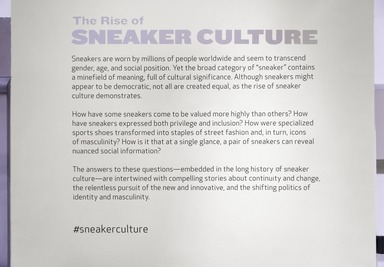

The Rise of Sneaker Culture, July 10, 2015 through October 4, 2015 (Image: DIG_E_2015_The_Rise_of_Sneaker_Culture_01_PS11.jpg Brooklyn Museum photograph, 2015)

The Rise of Sneaker Culture, July 10, 2015 through October 4, 2015 (Image: DIG_E_2015_The_Rise_of_Sneaker_Culture_02_PS11.jpg Brooklyn Museum photograph, 2015)

The Rise of Sneaker Culture, July 10, 2015 through October 4, 2015 (Image: DIG_E_2015_The_Rise_of_Sneaker_Culture_03_PS11.jpg Brooklyn Museum photograph, 2015)

The Rise of Sneaker Culture, July 10, 2015 through October 4, 2015 (Image: DIG_E_2015_The_Rise_of_Sneaker_Culture_04_PS11.jpg Brooklyn Museum photograph, 2015)
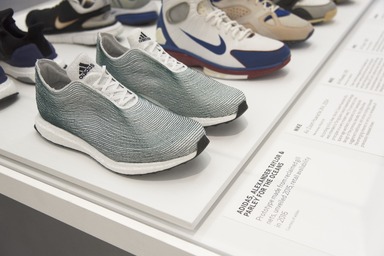
The Rise of Sneaker Culture, July 10, 2015 through October 4, 2015 (Image: DIG_E_2015_The_Rise_of_Sneaker_Culture_05_PS11.jpg Brooklyn Museum photograph, 2015)
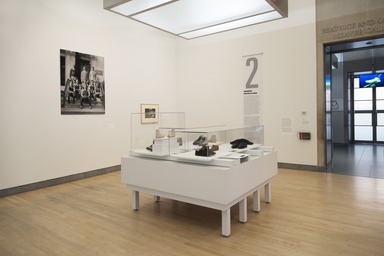
The Rise of Sneaker Culture, July 10, 2015 through October 4, 2015 (Image: DIG_E_2015_The_Rise_of_Sneaker_Culture_06_PS11.jpg Brooklyn Museum photograph, 2015)
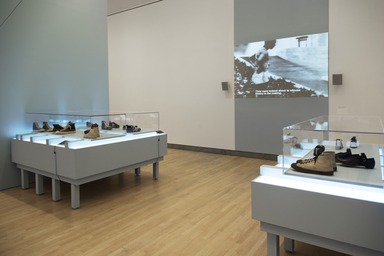
The Rise of Sneaker Culture, July 10, 2015 through October 4, 2015 (Image: DIG_E_2015_The_Rise_of_Sneaker_Culture_07_PS11.jpg Brooklyn Museum photograph, 2015)
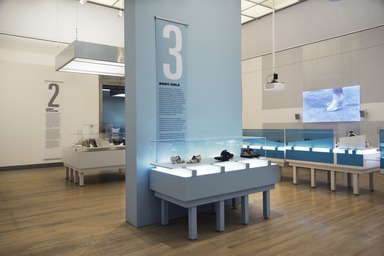
The Rise of Sneaker Culture, July 10, 2015 through October 4, 2015 (Image: DIG_E_2015_The_Rise_of_Sneaker_Culture_08_PS11.jpg Brooklyn Museum photograph, 2015)

The Rise of Sneaker Culture, July 10, 2015 through October 4, 2015 (Image: DIG_E_2015_The_Rise_of_Sneaker_Culture_09_PS11.jpg Brooklyn Museum photograph, 2015)
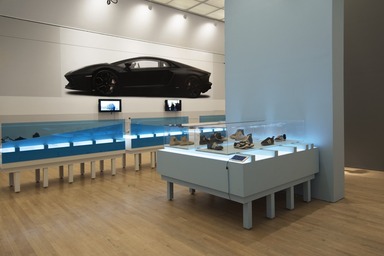
The Rise of Sneaker Culture, July 10, 2015 through October 4, 2015 (Image: DIG_E_2015_The_Rise_of_Sneaker_Culture_10_PS11.jpg Brooklyn Museum photograph, 2015)
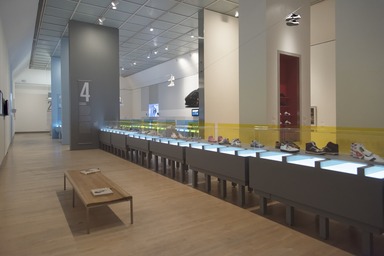
The Rise of Sneaker Culture, July 10, 2015 through October 4, 2015 (Image: DIG_E_2015_The_Rise_of_Sneaker_Culture_11_PS11.jpg Brooklyn Museum photograph, 2015)

The Rise of Sneaker Culture, July 10, 2015 through October 4, 2015 (Image: DIG_E_2015_The_Rise_of_Sneaker_Culture_12_PS11.jpg Brooklyn Museum photograph, 2015)
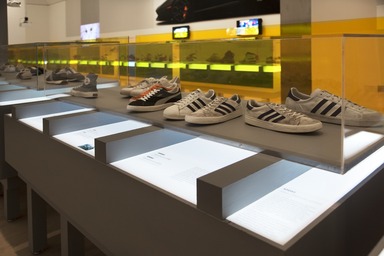
The Rise of Sneaker Culture, July 10, 2015 through October 4, 2015 (Image: DIG_E_2015_The_Rise_of_Sneaker_Culture_13_PS11.jpg Brooklyn Museum photograph, 2015)

The Rise of Sneaker Culture, July 10, 2015 through October 4, 2015 (Image: DIG_E_2015_The_Rise_of_Sneaker_Culture_14_PS11.jpg Brooklyn Museum photograph, 2015)

The Rise of Sneaker Culture, July 10, 2015 through October 4, 2015 (Image: DIG_E_2015_The_Rise_of_Sneaker_Culture_15_PS11.jpg Brooklyn Museum photograph, 2015)

The Rise of Sneaker Culture, July 10, 2015 through October 4, 2015 (Image: DIG_E_2015_The_Rise_of_Sneaker_Culture_16_PS11.jpg Brooklyn Museum photograph, 2015)
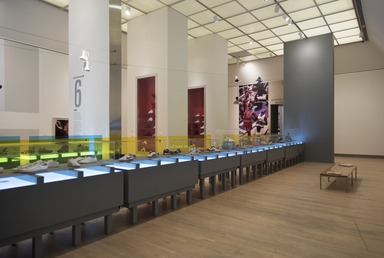
The Rise of Sneaker Culture, July 10, 2015 through October 4, 2015 (Image: DIG_E_2015_The_Rise_of_Sneaker_Culture_17_PS11.jpg Brooklyn Museum photograph, 2015)

The Rise of Sneaker Culture, July 10, 2015 through October 4, 2015 (Image: DIG_E_2015_The_Rise_of_Sneaker_Culture_18_PS11.jpg Brooklyn Museum photograph, 2015)
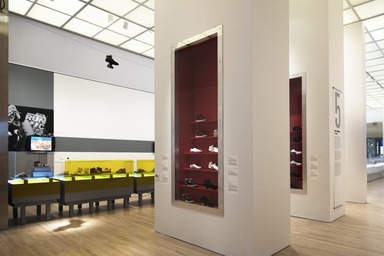
The Rise of Sneaker Culture, July 10, 2015 through October 4, 2015 (Image: DIG_E_2015_The_Rise_of_Sneaker_Culture_19_PS11.jpg Brooklyn Museum photograph, 2015)
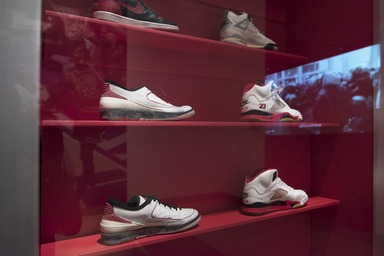
The Rise of Sneaker Culture, July 10, 2015 through October 4, 2015 (Image: DIG_E_2015_The_Rise_of_Sneaker_Culture_20_PS11.jpg Brooklyn Museum photograph, 2015)
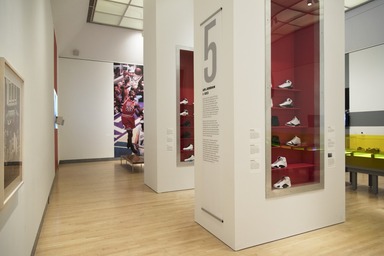
The Rise of Sneaker Culture, July 10, 2015 through October 4, 2015 (Image: DIG_E_2015_The_Rise_of_Sneaker_Culture_21_PS11.jpg Brooklyn Museum photograph, 2015)
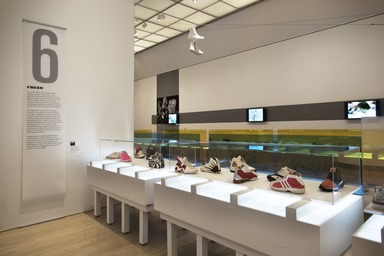
The Rise of Sneaker Culture, July 10, 2015 through October 4, 2015 (Image: DIG_E_2015_The_Rise_of_Sneaker_Culture_22_PS11.jpg Brooklyn Museum photograph, 2015)
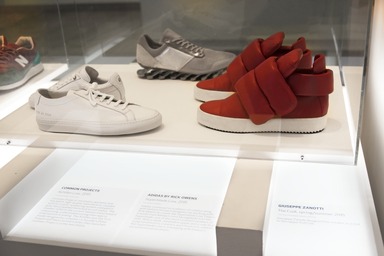
The Rise of Sneaker Culture, July 10, 2015 through October 4, 2015 (Image: DIG_E_2015_The_Rise_of_Sneaker_Culture_23_PS11.jpg Brooklyn Museum photograph, 2015)
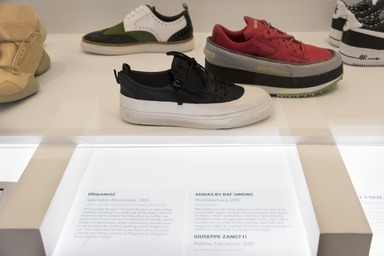
The Rise of Sneaker Culture, July 10, 2015 through October 4, 2015 (Image: DIG_E_2015_The_Rise_of_Sneaker_Culture_24_PS11.jpg Brooklyn Museum photograph, 2015)
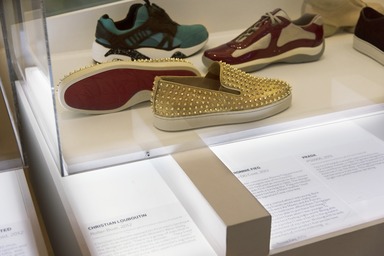
The Rise of Sneaker Culture, July 10, 2015 through October 4, 2015 (Image: DIG_E_2015_The_Rise_of_Sneaker_Culture_25_PS11.jpg Brooklyn Museum photograph, 2015)
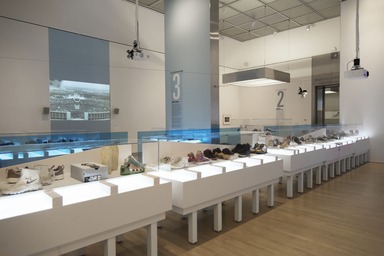
The Rise of Sneaker Culture, July 10, 2015 through October 4, 2015 (Image: DIG_E_2015_The_Rise_of_Sneaker_Culture_26_PS11.jpg Brooklyn Museum photograph, 2015)

The Rise of Sneaker Culture, July 10, 2015 through October 4, 2015 (Image: DIG_E_2015_The_Rise_of_Sneaker_Culture_27_PS11.jpg Brooklyn Museum photograph, 2015)

The Rise of Sneaker Culture, July 10, 2015 through October 4, 2015 (Image: DIG_E_2015_The_Rise_of_Sneaker_Culture_28_PS11.jpg Brooklyn Museum photograph, 2015)

The Rise of Sneaker Culture, July 10, 2015 through October 4, 2015 (Image: DIG_E_2015_The_Rise_of_Sneaker_Culture_29_PS11.jpg Brooklyn Museum photograph, 2015)
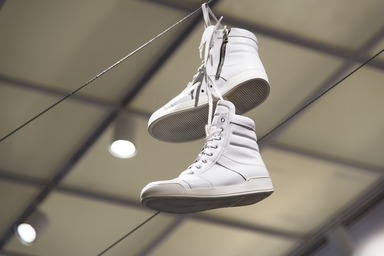
The Rise of Sneaker Culture, July 10, 2015 through October 4, 2015 (Image: DIG_E_2015_The_Rise_of_Sneaker_Culture_30_PS11.jpg Brooklyn Museum photograph, 2015)
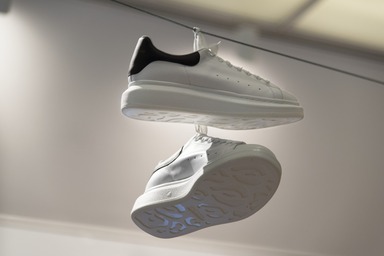
The Rise of Sneaker Culture, July 10, 2015 through October 4, 2015 (Image: DIG_E_2015_The_Rise_of_Sneaker_Culture_31_PS11.jpg Brooklyn Museum photograph, 2015)
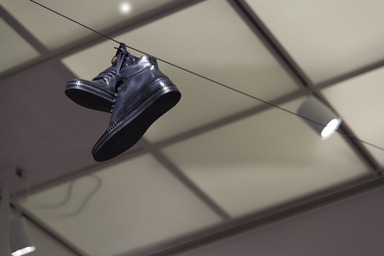
The Rise of Sneaker Culture, July 10, 2015 through October 4, 2015 (Image: DIG_E_2015_The_Rise_of_Sneaker_Culture_32_PS11.jpg Brooklyn Museum photograph, 2015)
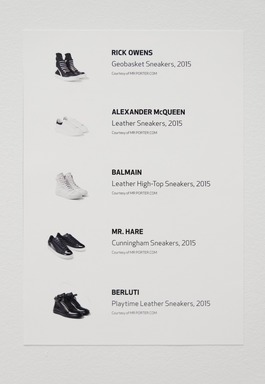
The Rise of Sneaker Culture, July 10, 2015 through October 4, 2015 (Image: DIG_E_2015_The_Rise_of_Sneaker_Culture_33_PS11.jpg Brooklyn Museum photograph, 2015)

The Rise of Sneaker Culture, July 10, 2015 through October 4, 2015 (Image: DIG_E_2015_The_Rise_of_Sneaker_Culture_34_PS11.jpg Brooklyn Museum photograph, 2015)
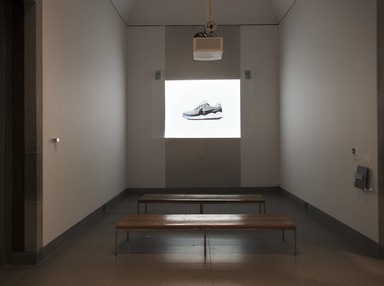
The Rise of Sneaker Culture, July 10, 2015 through October 4, 2015 (Image: DIG_E_2015_The_Rise_of_Sneaker_Culture_35_PS11.jpg Brooklyn Museum photograph, 2015)
The Rise of Sneaker Culture
-
May 1, 2015
From their modest origins in the mid-nineteenth century to high-end sneakers created in the past decade by designers such as Christian Louboutin and Prada, sneakers have become a global obsession. The Rise of Sneaker Culture is the first exhibition to explore the complex social history and cultural significance of the footwear now worn by billions of people throughout the world. The exhibition, which includes approximately 150 pairs of> sneakers, debuts at the Brooklyn Museum on July 10 and continues on view through October 4, 2015, before traveling to three other museums.
Originating at the Bata Shoe Museum in Toronto, the touring exhibition is organized by the American Federation of Arts (AFA) and the Bata Shoe Museum and explores the evolution of the sneaker from its beginnings to its current role as status symbol and urban icon. Included are works from collections such as the Bata Shoe Museum, Kosow Sneaker Museum, and Northampton Museums and Art Gallery; the archives of manufacturers such as Adidas, Converse, Nike, Puma, and Reebok; as well as private collectors such as hip-hop legend Darryl “DMC” McDaniels, sneaker guru Bobbito Garcia, and Dee Wells of Obsessive Sneaker Disorder. Also included are film footage, photographic images, and design drawings that contextualize the sneakers and explore the social history, technical innovation, fashion trends, and celebrity endorsements that have shaped sneaker culture over the past two centuries. Excerpts from the documentary Just for Kicks, covering sneaker culture from the 1970s to 2004, will be screened within the exhibition.
Organized into six sections, The Rise of Sneaker Culture includes an 1860s spiked running shoe, a pair of 1936 track shoes, the original Air Force 1 and early Adidas Superstars; contemporary sneaker collaborations with such artists and designers as Damien Hirst, Jeff Staple, and Kanye West; as well as sneakers and related prototype drawings spanning the career of Nike sneaker design legend Tinker Hatfield. In addition, the exhibition features Air Jordans I–XX3, highlighting the pivotal role that the coveted series of sneakers has played in the rise of contemporary sneaker culture.
The first section chronicles the development of rubber-soled footwear from the 1830s to the 1920s, exploring how the new vulcanization process was applied to the manufacture of comfortable and practical athletic footwear. During the same period, an increasingly industrialized society allowed people more leisure time, leading to the rise in popularity of sports and physical culture. Included in this section are one of the oldest existing running shoes, created by Thomas Dutton and Thorowgood in the 1860s; an original 1917 Converse All Star/Non Skid sneaker; and a 1920s Keds rubber-soled, canvas top shoe, a version of which is still in production.
Spanning the 1920s to the early 1970s, the second section examines the development of specialized sport shoes and explores the democratization of the sneaker and the evolution of consumer culture. Sneakers were increasingly worn by a wide range of social and age groups, and as early as the 1920s celebrities like basketball player Chuck Taylor and tennis player Jack Purcell began promoting brands. Included in this section are the Dominion Rubber Company Fleet Foot, a high-heeled women’s athletic shoe from ca. 1925; the Converse Gripper, made from the late 1940s through the early 1950s; and an Adidas Allround, one of the first leather high-tops, from 1960.
The next section focuses on the 1970s and 1980s, when many high-end sneakers moved beyond basic athletic use to become emblems of conspicuous consumption, examining the growth of fitness culture in relation to the “Me Generation” and how the sneaker evolved into a fashion item as prized on the street as in the gym. It closes with the two most pivotal events in contemporary sneaker culture: the 1985 launch of the Air Jordan franchise and Run–DMC signing on with Adidas after the 1986 release of “My Adidas.” Included are specialized signature sneakers like Reebok Freestyles released in 1982 for aerobic exercise; the extremely rare Bata x Wilson x John Wooden (1977); and the Puma Suede, which was later endorsed by Knicks legend Walt “Clyde” Frazier.
In the fourth section, the focus is on the synergies between hip-hop, basketball, and sneakers from the 1980s to today, when sneakers were transformed into treasured personal possessions, collectible items, and touchpoints for a mass audience. Boldly reintroducing color and pattern into men’s dress, fashionable sneakers became central to the idea of contemporary urban masculinity as markers of status and taste. Designers raised the sneaker to high fashion, and shoes recently produced by Lanvin, Hussein Chalayan, Jimmy Choo, and Yohji Yamamoto are featured. Also included in this section are examples of rare cult collaborations such as Adidas x Kanye West Yeezy Boost (2015), Nike Stewie Griffin Lebron VI (2009), Nike Dunk Supremes (2003), and Nike Pigeons (2005).
The fifth section explores the Air Jordan phenomenon, which began with Nike’s signing of Michael Jordan in 1984 and the appearance of the first Air Jordan the following year. Air Jordans have revolutionized the sneaker industry, and their colorways, innovative style, and cultural significance changed the way people looked at athletic shoes. Included here are Air Jordans I to XX3.
The exhibition concludes with a section about sneaker design and innovation featuring a selection of Tinker Hatfield designs and shoes, among them the Nike Air Trainer 1, the first cross-trainer, and the iconic Air Jordans III and XI, as well as Eric Avar’s Nike Foamposite, Paul Litchfield’s Reebok Pump, and GE x Android Homme’s Missions moon boots.
The Rise of Sneaker Culture is organized by the American Federation of Arts and the Bata Shoe Museum. The exhibition was curated by Elizabeth Semmelhack, Senior Curator at the Bata Shoe Museum.
The Brooklyn presentation has been organized by Lisa Small, Curator of Exhibitions at the Brooklyn Museum. Following Brooklyn, the exhibition will be presented at the Toledo Museum of Art from December 3, 2015, to February 28, 2016; the High Museum of Art from June 12 to August 14, 2016; and the Speed Art Museum from September 9 to November 27, 2016.
The exhibition is accompanied by a fully illustrated catalogue published by the AFA in partnership with the Bata Shoe Museum and Rizzoli. Included are an introduction by Bobbito Garcia; an essay by Elizabeth Semmelhack, Senior Curator of the Bata Shoe Museum; an essay on conserving your sneakers by Ada Hopkins, Conservator of the Bata Shoe Museum; and interviews between Dee Wells and Nike designers Tinker Hatfield and Eric Avar, as well as a variety of contributions by sneaker experts including influential figures such as Cey Adams, James Bond, Darryl “DMC” McDaniels, Marc Ecko, D’Wayne Edwards, Walt “Clyde” Frazier, Adam “Ad Rock” Horovitz, Christian Louboutin, Hiroki Nakamura, Tom Sachs, Jeremy Scott, and Stan Smith, among others.
#sneakerculture
Press Area of Website
View Original
